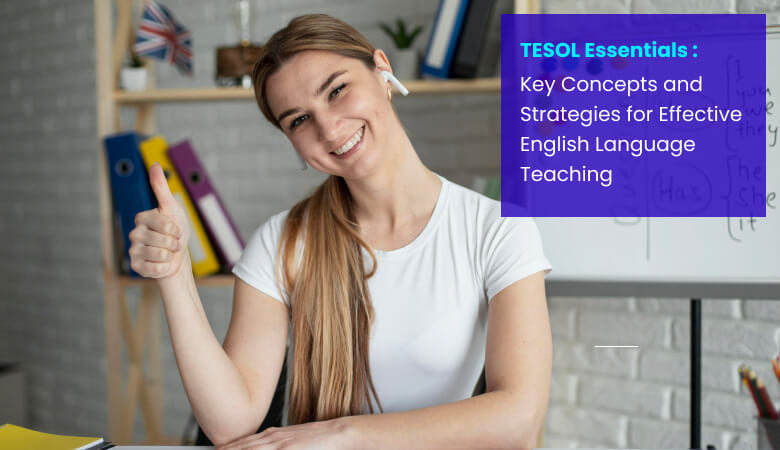 March Special Offer
March Special Offer

Consider attempting to grasp a lesson being taught in a classroom when you are not familiar with the language. At the most fundamental level, one of the specialized tactics needed to teach English language learners is to "put you in their shoes."
The Department of Education reports that over 5 million students in American schools are categorized as English language learners (ELLs). Teaching these pupils the language presents additional obstacles, and these students confront the issue of their instructors not knowing how to educate them effectively.
Just as with your native English-speaking pupils, it is critical to often assess your ELLs' comprehension and emphasize that it's OK if they don't comprehend. By regularly checking in, you can make sure your student is understanding the material and learning it. It also guarantees that the atmosphere you are creating is encouraging. Never assume that everything is going well. Provide varied and frequent feedback.
Since many English language learners are foreign nationals, fostering an awareness of diversity may be a necessary component of building the perfect learning environment. Gaining knowledge about each student's history, religion, and cultural customs may also help you understand how best to engage with that specific student (for instance, if they come from a culture where making eye contact with adults is considered impolite).
Fundamentally, discussing students' various cultural backgrounds fosters interpersonal relationships and emphasizes the idea that diverse cultures have both similarities and differences, which is crucial for students who are learning a new language and culture. A few education proponents also propose house visits as a useful "extracurricular" activity that teachers might engage in to foster rapport.
The accommodation tactic is an additional one. In essence, this is modifying written or spoken language to make it easier for students whose first language is not English to grasp.
Partitioning processes and material into digestible chunks is another way to change the way that instructions are given. Also, wherever feasible, provide options.
Before teaching a new idea to pupils, it is beneficial to offer them some foundational knowledge via anchor words and charts. Whenever feasible, introduce vocabulary beforehand and provide them with sentence stems to aid with sentence construction.
In many circumstances, an ESL expert may also be providing specialized teaching in English as a second language to your English language learners. Nonetheless, it is beneficial for educators teaching any subject in mainstream schools to comprehend and value the position of language teachers as well.
There is no need to hurry; you have a lot of information to cover. Teachers of English Language Learners are really urged to slow down deliberately. This might entail Speaking at a slower, more deliberate pace.
Giving students more time to respond—between three and five more seconds—gives everyone a little more time to consider their answers.
While they are difficult to acquire, productive language skills like speaking and writing are crucial for achieving language fluency. As a result, even if pupils are reluctant about them, they should be the center of attention from the beginning. Learning a new language and its culture should be seen as an addition to what pupils already know instead of substituting the language that they already know.
Please encourage students to explore introductory or relevant resources in their native tongue prior to class when a new subject is introduced. Once again, this would have a profound impact on their comprehension and involvement.
Permit kids to switch between speaking in their tongue and English. This is a crucial tactic for ELLs since they often experience anxiety when asked to speak. Some of the anxiety that might arise is reduced when students are able to utilize their first language to aid in the acquisition of their second language. This is very helpful for expressing complicated ideas and thoughts since it relieves the strain of the communication medium and lets the speaker concentrate on conveying their views.
The concept of differentiated instruction, which is seen as essential to educating English language learners, is linked to the visual aids technique. In this instance, it is acknowledged that certain students are "visual learners," meaning that using images, charts, diagrams, and other visual aids helps them better understand and process new ideas and information.
It is believed that all students, not only English language learners, benefit by integrating "nonlinguistic representation" with the linguistic portion of each session; the key tactic is to "show" in addition to "tell." Teachers are advised to write everything on the board in addition to using drawings, diagrams, and other visual aids so that students can see the material as well as hear it.
Furthermore, ELLs may be assisted in understanding the subtleties of what is being said by using technological tools like speech typing, closed captioning, recording sessions, viewing replays, and employing microphones for voice amplification systems.
Your ELL students will improve their learning and pave the road for a better future by using the tactics mentioned above! Visit NEWAGE TEACHER TRAINING ACADEMY PRIVATE LIMITED for more information about TESOL course in Kolkata.